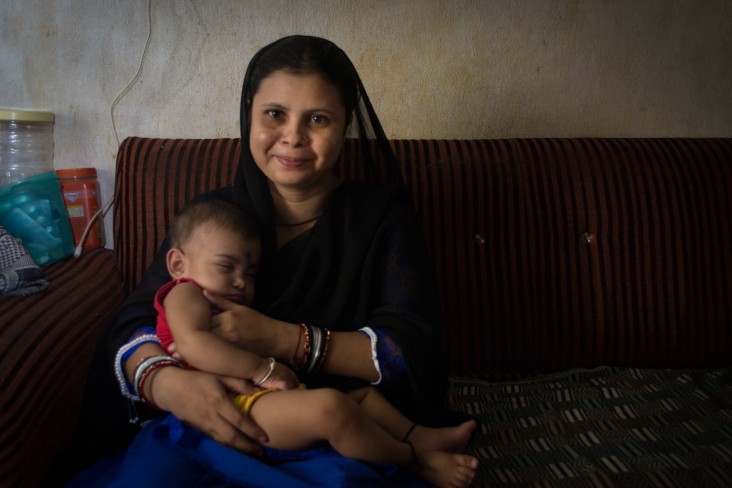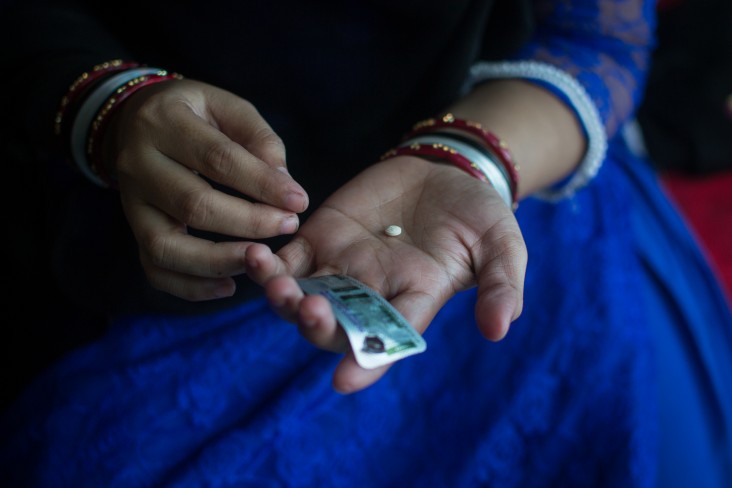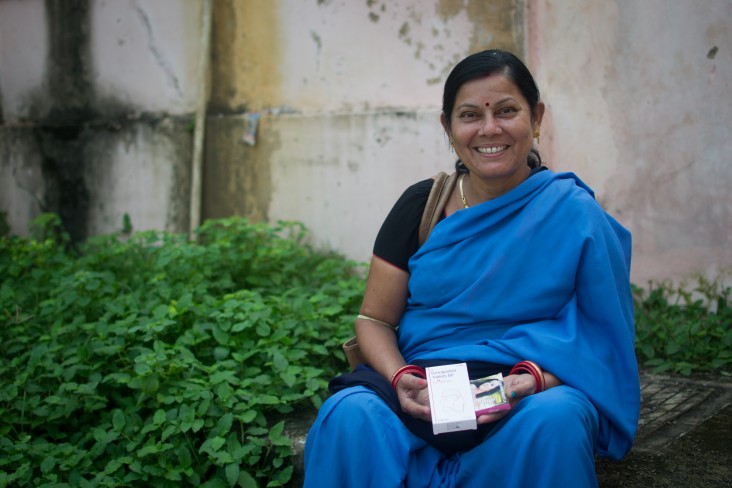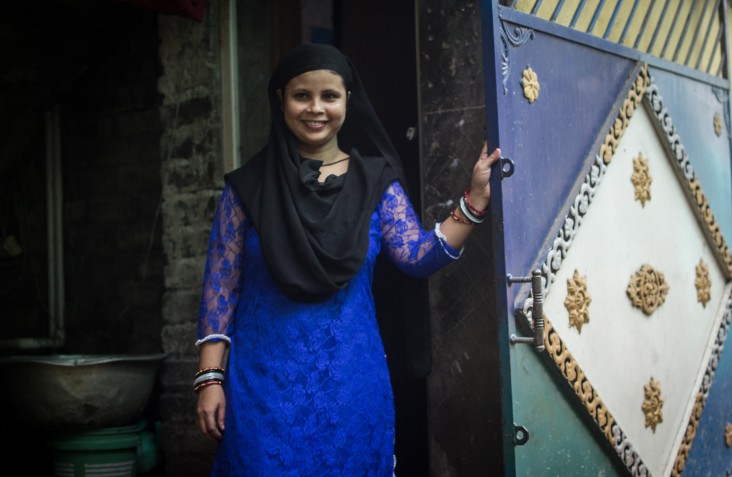- What We Do
- Agriculture and Food Security
- Democracy, Human Rights and Governance
- Economic Growth and Trade
- Education
- Environment and Global Climate Change
- Gender Equality and Women's Empowerment
- Global Health
- Humanitarian Assistance
- Transformation at USAID
- Water and Sanitation
- Working in Crises and Conflict
- U.S. Global Development Lab
Speeches Shim
Story: Anam Khan
Images: Mubeen Siddiqui
Design: Harleen Sidhu
Cuttack District, Odisha, India January 2019

Born and married into a conservative milieu, this shy, introverted, young new mother, all of 23 years, did not have exposure to spaces or people with whom she could discuss sensitive issues like family planning (FP). Asma's first child was born within the first year of marriage and she was scared she could soon get pregnant again. Asma and her husband, a mechanic at a private motor garage, had discussed this, and they knew that they did not want another child in the near future, but they were not sure about whom to speak with about something this intimate. So when Renuka Sethi - a community health worker (CHW)visited Asma's home and offered all the information she needed to avoid an unintended pregnancy, Asma felt relieved and empowered.
Trained under USAID's flagship Maternal and Child Survival Program (MCSP), Renuka patiently explained all the options that Asma could choose from, including the newer FP methods offered by the Government of India (Gol). Armed with all this information and feeling much more in control, Asma was curious to know more about the non-invasive spacing methods, such as the pills.

Renuka told her about pills that she could take daily, pills that she could take once a week and pills that she could take while she was still breastfeeding. Asma chose Centchroman - a non-hormonal and non-steroidal oral contraceptive, to be taken twice a week for the first three months and once a week thereafter following her delivery.
What Asma liked the most about her choice, Centchroman, was that she could breastfeed her daughter, Gulsabha, and still be on a pill, as taking it would not affect the quantity or the quality of her breastmilk. Asma also wanted an option where her fertility could return, whenever she chose to conceive another child, and Centchroman provided her that flexibility. For Asma, Centchroman worked, and was her choice for FP. She felt in control!

Once the decision was taken, Renuka accompanied Asma to the health facility to meet with the health care provider, who ascertained her medical eligibility and issued her the Centchroman supplies, which are branded under the name, Chhaya. When Asma met Dr. Snighda Banwasini Nanda, also an MCSP trained provider at the City Hospital, Cuttack, not only did the doctor counsel Asma about the benefits of her chosen FP method, but she also informed her about the possible side effects. At this stage, Asma knew a lot more about her FP choice, and for the first time, she also had, this support system around her to reach out to in case she had any concerns.
Centchroman was added recently to the basket of contraceptive choices when MCSP, led by Jhpiego, advocated with the Gol to expand the basket of choices for FP in India. Global evidence suggests that expansion of the contraceptive method mix has a positive relationship with contraceptive use. In fact, the addition of one method available to at least half the population, in low and middle-income countries, correlates with an increase of 4-8 percentage points in total use of the six modern methods, namely, male and female sterilization, pills, Intra Uterine Devices (IUDs), condoms and injectable contraceptives1.
“I haven't decided when I want the next child but for now I don't. So I never miss a pill. I help around in the household and play with my daughter all day long. It makes me very happy.”

Asma's powerful example illustrates the experience of thousands of women in the MCSP supported states (Assam, Chhattisgarh, Maharashtra, Odisha, and Telangana), who have opted for a newer contraceptive method like Centchroman. Within 18 months of demonstrating at 52 facilities, 4325 and 6768 clients have accepted POPs and Centchroman, respectively, contributing to an eleven percent increase in Postpartum FP acceptors from 11 % to 22%2.
32,019 CHWs, like Renuka, have been trained under this program and are reaching the last mile to support 9.7 million clients to opt for FP methods of their choice3.
In turn, these health workers are also enabling India to get closer to its FP2020 goal of reaching 48 million new users. A goal, which is rooted in the right of women to decide freely whether, when and how many children to have. Exactly what Asma is doing, with her FP method choice - deciding freely for herself whether, when and how many children to have!
Sources:
1 Ross J, Stover J. 2013. "Use of modem contraception increases when more methods become available: analysis of evidence from 1982-2009". Global Health: Science and Practice 2013; 1(2) 203-212.
2 Data till Oct, 2018. Jhpiego India Program Data.
3 Data tll Oct, 2018. Jhpiego India Training Database.

Comment
Make a general inquiry or suggest an improvement.